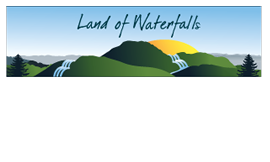In the early 1930s Transylvania was still a small, rural agricultural based county. The county population was 9,589 in 1930.
Most people made their living working in the logging and lumber industry or farming. Louis Carr’s Carr Lumber Company, along with Gloucester Lumber, Toxaway Tanning, Rosman Tanning and Extract and Transylvania Tanning, all owned by Joseph Silversteen were the largest employers in the county. The CCC had camps at John’s Rock and in Balsam Grove, providing much needed jobs.
In 1933 Lyday Memorial Hospital was founded on Probart Street by Dr. Newland and Dr. Cunningham. Brevard College open-ed its doors in September 1934. Downtown businesses included B and B Feed and Seed, the A and P, Trantham’s Department Store and Macfie’s and Long’s Drug Stores. The Clemson Theatre was also downtown.
In November 1933 rumors began swirling throughout Transylvania, Henderson and Buncombe counties regarding proposed plans for development of the French Broad Valley under the TVA for the purposes of producing power. A dam or dams on the French Broad River would create a lake extending many miles through the mountain valleys of Henderson and Transylvania counties. Other reports stated the purpose was to build storage reservoirs rather than to generate power. After conducting aerial surveys and cost studies the TVA announced in July 1934 that the project was not “economically justified at the present time.”
Almost 30 years later, in 1961 the TVA was back. Following major flooding along the French Broad, the Western North Carolina Regional Planning Commission and the State Department of Water Resources asked the TVA to draw up a plan for the comprehensive development of the resources of the area. The TVA quickly dusted off the project they had started in 1933.
 This time Buncombe, Henderson and Madison county officials endorsed the plan. However, in Transylvania County where three major dams were proposed officials and citizens were concerned. According to Martha Gash Boswell in “Grassroots Along the Upper French Broad: The Valley People Versus the Tennessee Valley Authority 1961-1971” the new American Thread plant and a large part of Rosman, the Little River farming community and the area from Schenck Job Corp to the fish hatchery, along with other key low-laying areas, would all be underwater.
This time Buncombe, Henderson and Madison county officials endorsed the plan. However, in Transylvania County where three major dams were proposed officials and citizens were concerned. According to Martha Gash Boswell in “Grassroots Along the Upper French Broad: The Valley People Versus the Tennessee Valley Authority 1961-1971” the new American Thread plant and a large part of Rosman, the Little River farming community and the area from Schenck Job Corp to the fish hatchery, along with other key low-laying areas, would all be underwater.
The library has copies of Martha Gash Boswell’s booklet chronicling the fight by the people of Little River and Mills River to save their prized farmland and generations of history. There is also a file containing newspaper clippings, letters and other documents on the TVA’s involvement with the French Broad River available in the Rowell Bosse North Carolina Room.
Photographs and information for this column are provided by the Rowell Bosse North Carolina Room, Transylvania County Library. Visit the N.C. Room during regular library hours (Monday-Friday) to learn more about our history and see additional photographs. For more information, comments or suggestions, contact Marcy at marcy.thomp [email protected] or (828) 884-3151 ext. 242.
Captions
Top Photo: This view from Corner Rock on Cantrell Mountain overlooks the upper French Broad valley. In the background you see Hogback/Toxaway Mountain. Depending on where the dam was actually built this valley around Island Ford and Country Club roads may also have been flooded.
Bottom Photo: Little River farmland would have been lost if the TVA had built the proposed dams in Transylvania County.




